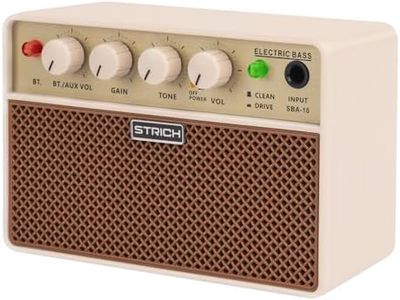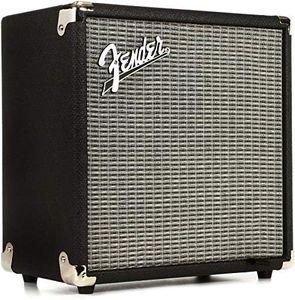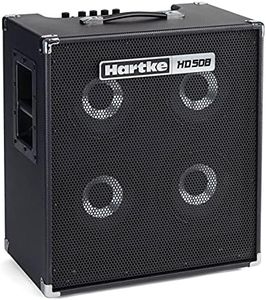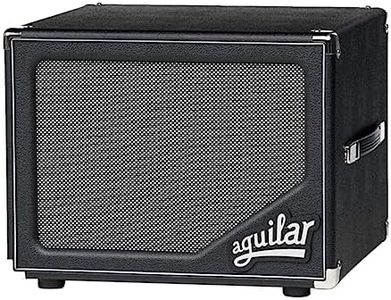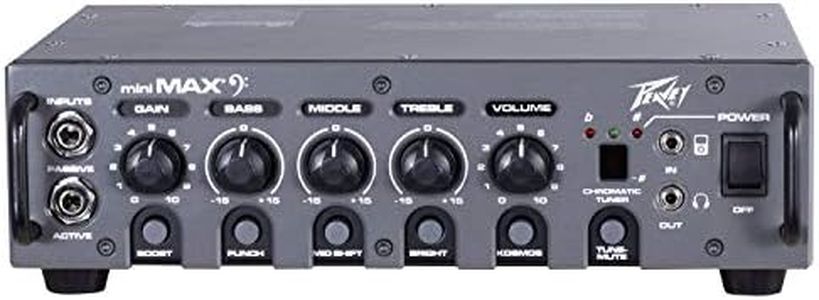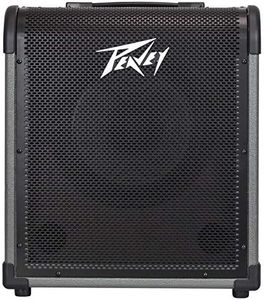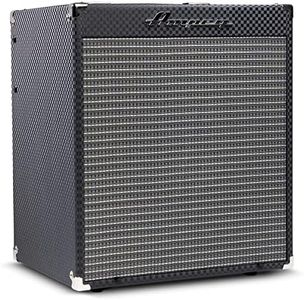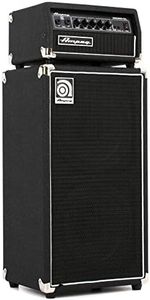10 Best Bass Guitar Amplifiers 2025 in the United States
Our technology thoroughly searches through the online shopping world, reviewing hundreds of sites. We then process and analyze this information, updating in real-time to bring you the latest top-rated products. This way, you always get the best and most current options available.

Our Top Picks
Winner
Aguilar TH700V2 Tone Hammer Gen 2 700-watt Bass Amplifier Head (TH700V2)
Most important from
5 reviews
The Aguilar TH700V2 Tone Hammer Gen 2 is a solid choice for bass players looking for a powerful and portable amplifier head. It delivers a strong 700 watts of power, which means it can easily handle gigs or rehearsals in medium to large venues with clear, loud sound projection. Its 4-band EQ with a semi-parametric midrange allows you to shape your tone precisely, making it versatile for different music styles. The Drive control adds a nice bit of grit or punch, useful if you want a bit of extra character in your sound.
Weighing only about 5 pounds, it’s light and easy to carry, which is great for musicians who move around often. The amp also includes useful connections like an XLR DI output for plugging into a mixer or PA, and a headphone jack for quiet practice or recording. Aguilar’s built-in IR loader offers cabinet simulation, helping you get a great recorded tone without extra gear. The construction uses quality components, ensuring durability.
Although it supports speaker loads down to 2.67 ohms, you should verify your speaker’s compatibility. Some users might find the 4-band EQ less customizable compared to amps with more detailed controls or additional built-in effects. This amp head is well suited for bassists who prioritize powerful sound, portability, and straightforward tone shaping without needing extensive onboard effects.
Most important from
5 reviews
Fender Rumble 25 V3 Bass Amplifier, Bass Combo Amp, 25 Watts, with 2-Year Warranty, 8 Inch Speaker, with Overdrive Circuit and Mid-Scoop Contour Switch
Most important from
7524 reviews
The Fender Rumble 25 V3 is a compact and solidly built bass combo amp, perfect for beginners or those needing a practice amp. It offers 25 watts of power paired with an 8-inch speaker, which provides enough volume and deep bass tones for home use or small jam sessions. The amp includes useful tone controls like a mid-scoop contour switch and an overdrive circuit that lets you explore a range of sounds, from gritty and growling to modern punchy bass. This flexibility is a real plus for players wanting to experiment with their tone without extra gear.
It also features practical inputs such as a headphone jack for silent practice and an auxiliary input to jam along with music from your phone or MP3 player. Weighing about 18 pounds and with moderate size, it’s fairly portable but not the lightest option on the market. While it doesn’t have a wide variety of built-in effects beyond overdrive, its simple layout and solid construction make it reliable and user-friendly.
If you’re looking for a budget-friendly, versatile amp mainly for practice or small gatherings, the Fender Rumble 25 V3 is a strong contender. Those needing more power, bigger speakers, or advanced effects might eventually outgrow it.
Most important from
7524 reviews
Gallien-Krueger MB110 1x10 Inches 100-Watt Bass Combo
Most important from
6 reviews
The Gallien-Krueger MB110 1x10" 100-watt Bass Combo Amp is a solid choice for bass players seeking a balance between power and portability. It delivers 100 watts of power through a 10-inch speaker, making it suitable for practice sessions and small gigs. Weighing 21 pounds and with dimensions of 14.5 x 12.5 x 12.5 inches, it is relatively easy to transport, which is a definite plus for musicians on the go.
The amp features an XLR connector, which is useful for direct recording or connecting to a PA system. Its build quality, using metal, plastic, and rubber, suggests durability, though it may not have the premium feel of all-metal construction units. On the downside, the MB110 is light on built-in effects, which might limit versatility for some players. It does have basic tone controls to adjust your sound, but if you're looking for a wide range of effects, you may need additional pedals or equipment.
Customer feedback is generally positive, with a 4.5-star rating. The Gallien-Krueger MB110 is great for those who need a dependable, portable amp with good sound quality, but may not satisfy players looking for extensive built-in effects or high-end construction.
